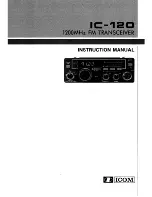
NEO-M9N - Integration manual
3.11.2.3.3 Behavior while USB host connected
As long as the receiver is connected to a USB host, it will not enter the lowest possible power state.
This is because it must retain a small level of CPU activity to avoid breaching requirements of the
USB specification. The drawback, however, is that power consumption is higher.
Wake up by pin/UART is possible even if the receiver is connected to a USB host. In this case
the state of the pin must be changed for a duration longer than one millisecond.
3.11.2.3.4 Cooperation with the AssistNow Autonomous feature
features are enabled, the receiver will not enter
(Inactive)
awaiting next fix
state as long as
AssistNow Autonomous
carries out calculations. This prevents
losing data from unfinished calculations and, in the end, reduces the total extra power needed for
AssistNow Autonomous
. The delay before entering
(Inactive) awaiting next fix
state, if any, will be in
the range of several seconds, rarely more than 20 seconds.
Only entering
(Inactive) awaiting next fix
state is affected by
AssistNow Autonomous
. This means
that: in cyclic tracking operation,
AssistNow Autonomous
will not interfere with the PSM (apart from
the increased power consumption).
Enabling the
AssistNow Autonomous
feature will lead to increased power consumption while
prediction is calculated. The main goal of PSM is to reduce the overall power consumption.
Therefore for each application special care must be taken to judge whether
AssistNow
Autonomous
is beneficial to the overall power consumption or not.
3.11.2.4 Examples
3.11.2.4.1 Use grid offset
Scenario: Get a position fix once a day at a fixed time. If the position fix cannot be obtained try again
every two hours.
Solution: First set the update period (
POSUPDATEPERIOD
) to 24*3600s and the search period
(
ACQPERIOD
) to 2*3600s. Now a position fix is obtained every 24 hours and if the position fix fails
retrials are scheduled in two-hour intervals. As the update grid is aligned to midnight Saturday/
Sunday
, the position fixes happen at midnight
. By
setting the grid offset (
GRIDOFFSET
) to 12*3600s the position fixes are shifted to once a day at noon
. If the position fix at noon fails, retrials take place every two hours, the first
at 14:00
. Upon successfully acquiring a position fix the next fix attempt is
scheduled for noon the following day.
3.11.2.4.2 User-controlled position fix
Scenario: Get a position fix on request.
Solution: Set
POSUPDATEPERIOD
and
ACQPERIOD
to zero. Set
EXTINTSEL
to the desired EXTINT pin
to be used. Enable the
EXTINTWAKE
and
EXTINTBACKUP
features.
3.11.2.4.3 Use update periods of 30 minutes
Scenario: Get a position fix once every 30 minutes and acquire a fix needed for timing products.
Solution: Set mode of operation to PSMOO. Set
POSUPDATEPERIOD
to 1800 seconds. Set the search
period to 120 seconds. Enable
WAITTIMEFIX
feature.
3.11.3 Peak current settings
The peak current during acquisition can be reduced by activating the corresponding option in CFG-
PM-LIMITPEAKCURR. A peak current reduction will result in longer start-up times of the receiver.
UBX-19014286 - R07
3 Receiver functionality
Page 50 of 95
C1-Public
















































